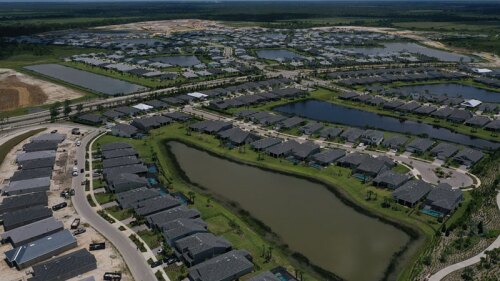While the focus was often technology and innovation at ULI’s Fall meeting in San Francisco, a panel at the meeting tackled water issues, calling them “risky business” for the West. In the region’s arid states, water is an ongoing and complicated issue, but the drought in California has pushed it to the national stage. Few other concerns could be as much a disruptor for development as water.
Panelists agreed that having a supply of water was something most of us just expect. “Water is most essential. Without water, everything is useless,” said Matthew Diserio, president and cofounder, Water Asset Management, acknowledging that the whole mind-set around water needs to be changed. “Water has been taken for granted globally for decades. But people are becoming more mindful that water is the last thing we can take for granted.” Diserio pointed to the example of Brazil, where an 80-year drought had a measurable impact on the country’s gross domestic product (GDP), way beyond the agricultural implications that most would expect.
Related: Returns on Resilience: the Business Case
The challenge for developers and communities is going to be how to grow with a limited water supply. Thomas Iseman, deputy assistant secretary for water and science, U.S. Department of the Interior, said, “The future is going to be different than the past. There will be competing demands for a limited water supply in an era when there is uncertainty about what the future will look like.”
Water in the West is complicated. Factored into the mix of developers and consumers is a number of interests including municipal utilities, private operators, and the federal, local, and state governments,. Approximately 80 percent of the water in the West that is not allocated to government is dedicated to agriculture, which generates only 2 percent of GDP. In addition, panelists explained, water-rights law has a “use it or lose it” clause, so the agriculture sector is
incentivized to use all the water available to it. In the future, the challenge will be creating ways and incentives for the agriculture industry to divert some of its water to a higher use.
Iseman noted that his department is partnering with the U.S. Department of Agriculture to create more efficiencies. Getting consumers onboard is another challenge, and Iseman believes that programs such as WaterSmart will help consumers become more aware of water use. “We need to raise awareness to the general public,” he said.
“All water consumption in the U.S. needs to be monitored,” observed Thomas DiPrima, president, southern California urban operations for KB Home. “We have learned so much doing monitoring,” he said. For consumers, he sees monitoring as a way to change water habits. KB Home is moving toward having water monitors as standard in all homes. Also, the homebuilder’s newest community has a system that stores and cleans graywater to be used for irrigation. The KB Hone Double Zerohouse is one of the case studies in a recent ULI publication, Returns on Resilience: the Business Case.
Panelists saw current crises as an opportunity to mobilize the private sector, consumers, and agriculture. Iseman believes the conversation needs to move beyond the public sector. “We need to change the conversation. I think ULI and the real estate community can play a critical role here. Part of it is awareness, part is financing and how you invest in infrastructure.” Giving agriculture the opportunity to realize the value of water in other uses is a good model, he says, but there is a number of challenges. Speaking for the U.S. Department of Interior, he says, “Our role is to provide conditions where that can happen. Our job is to demonstrate that it happens.”
Part of the solution, according to Diserio, is pricing water appropriately. “Until water is valued, there is no incentive to invest. When water is priced to total costs, what you end up with is a sustainable, reliable supply of clean water. There is a huge opportunity to commit capital to solve these problems with a little help on the regulatory side.” Also, he said, “When pricing is implemented, there is great efficiency in the system.” Estimates from the panel were that approximately 40 percent of the water a city tries to deliver is lost because of infrastructure.
When asked about the potential an El Niño might bring to California’s drought, panelists say it might resolve some of the issues, but most spoke to a need for groundwater storage to take advantage of the windfall, especially if it came as rain rather than snow. “A storage asset is something that continues to generate returns for investors for not five or ten years, but 100 years,” observed Diserio.




